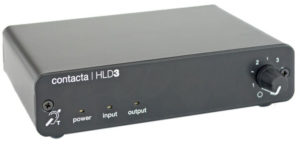Neil Bauman, Ph.D.
A man wrote,
I have a question regarding making a double-wire loop. You talk about the difference between the length of the loop around the room and the total length of wire. In the case of a double loop, the length of wire is twice the length of the loop around the room. I am concerned about not exceeding the specs of the loop amplifier.
So is it the physical length of the loop e.g. 80 feet in my case, or is it the total length of wire in a double loop e.g. 160 feet? We currently are using a single loop, but I want to try a double loop to get more signal.
You have to consider the specifications of your loop amplifier in two respects. First is the area that the loop amplifier can cover. Second, is the total impedance (resistance) of the loop used.
The area to be covered by the loop is governed by the length of wire required to go around the room once. If you exceed the maximum area your loop amplifier can adequately cover, then you will have a weak (or dead) spot in the center of the loop. Small loop amplifiers can typically cover around 450 to 650 square feet, depending on the house construction, the shape of the loop and other factors. Typically they are designed to use a loop with a perimeter of around 100 feet.
A double-wire loop has the wire running around the looped area twice, so it would use 200 feet of wire to loop the same area.
Since a loop amplifier wants to see about a 1 ohm resistance in the loop wire (+ or – 30% or so), if you use a double-wire loop, you should increase the size of the wire. For example, a single wire loop of 20 gauge wire has a resistance of 1.015 ohms per 100 feet. This is perfect for a single wire loop. However, if you want to make a double-wire loop, then you’d probably want to use 18 gauge wire with a resistance of 0.639 ohms per 100 feet for an overall resistance of 1.278 ohms, or a 16 gauge wire with a resistance of 0.402 ohms per 100 feet of wire for a total resistance of 0.804 ohms.
If your single wire loop is 80 feet that will adequately cover the area a typical small loop amplifier can easily handle (unless there is a lot of metal in the floor). However, if you want to make a double-wire loop, use 18 gauge wire and you’ll come out right on the money with a resistance of 1.02 ohms.



Leave a Reply